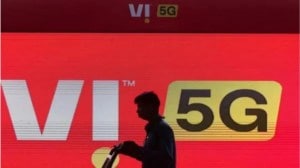High-level delegation to discuss Indo-Oman project
NEW DELHI, JULY 7: A delegation consisting of top officials from the fertiliser ministry and the proposed Indian promoters of the Rs 4,65...

NEW DELHI, JULY 7: A delegation consisting of top officials from the fertiliser ministry and the proposed Indian promoters of the Rs 4,650-crore Indo-Oman fertiliser project will be in London next week to discuss a modified proposal for financing the project. The meeting is being viewed as a crucial one for finalising the loose ends of the project.
Fertiliser secretary A V Gokak and top officials from three public sector fertiliser companies — Iffco, Kribhco and Rashtriya Chemicals and Fertilisers (RCF) — will meet top officials from the Banque Nationale De Paris (BNP) in London next week. BNP is among the lead lenders for the proposed project.
The delegation had also visited Oman last month to discuss some changes in the plan for financing the project to reduce the risk exposure of all promoters of the project as well as reducing the cost of the project by around $100 to 150 million (Rs 450 to Rs 550 crore).
The Indian promoters basically want to hedge their risk this time around by working out along-term price agreement. Under this agreement, the price charged for the urea purchased by the Indian promoters from the project would be around 10 per cent higher than the prevailing international prices during the first 10 years of the project. Between the 11th and the 15th year, the 50 per cent of the cash flow from the project would come back to the Indian government through discounts on the urea purchased by them.
“The average prices worked out for these 15 years then would be worked out on the Net Present Value (NPV) and would be the same as though India was buying the fertiliser from the international market,” explains a top source of the delegation. In the earlier proposal for the project, while India would be benefitting through floor prices of urea from the project, the risk component from lenders’ conditionality was very high.
Informed sources say that the reason why the project, originally conceived through bilateral efforts of the Omani and Indian governments in 1995, has been delayedbecause world over the urea prices are showing a downward trend. As a result, justifying huge investment in the project at high risk may make the project non-viable.
The advantages of the project, the sources explain, would be that India would have access to fertilisers produced at lower cost in Oman-based on natural gas, which is not available in India and in any case is more expensive. Moreover, India would have an assured supply of fertiliser dedicated to it at a pre-negotiated price as compared to prices in the international market which are known to fluctuate widely. More often than not, every time India and China enter the international market, these prices harden.
Further, transport of urea from Oman to Mumbai ports would take only two to three days, almost as much as it would take from Calcutta to Mumbai.





- 01
- 02
- 03
- 04
- 05


























